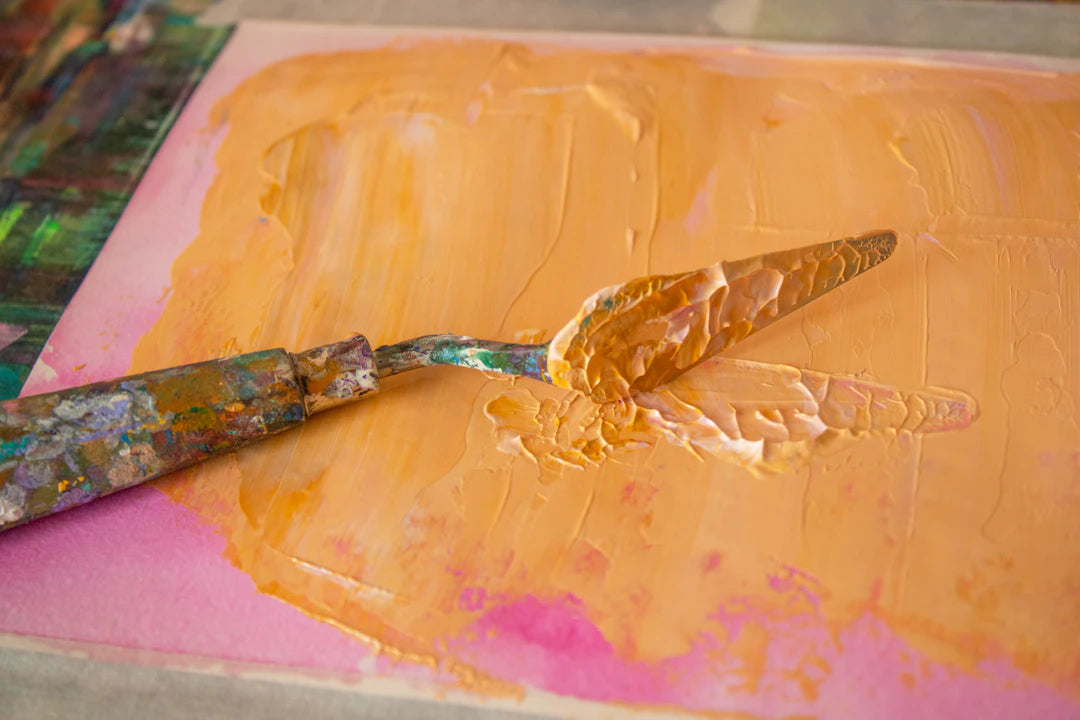Overview
This blog provides a comprehensive guide on preparing your guitar for a custom paint job, emphasizing the importance of proper preparation for optimal paint adhesion and finish. Key steps include gathering materials, removing hardware, cleaning, sanding, masking, applying primer, and choosing the right paint. The guide also discusses the impact of paint on guitar tone and suggests considering professional help for those unsure of their skills. Lastly, it offers creative design ideas to inspire your unique guitar transformation.
Frequently Asked Questions
1. Why is it important to prepare my guitar before a custom paint job?
2. What materials do I need to gather for painting my guitar?
3. What is the first step in preparing my guitar for painting?
4. How does a custom paint job affect my guitar's tone?
5. Should I consider professional help for my guitar paint job?
Your guitar is not just an instrument; it’s a reflection of your personality and style. Whether you’re a seasoned musician or a passionate beginner, preparing your guitar for a custom paint job is essential to enhance its aesthetic appeal. This guide will take you through the necessary steps to ensure that your guitar looks stunning while providing optimal performance. Plus, we’ll touch on how a well-executed paint job can even contribute to guitar tone enhancement.
The Importance of Proper Preparation
Before unleashing your creativity on your guitar, it’s crucial to understand why preparation is key. A properly prepped guitar leads to superior paint adhesion and a professional finish. This also includes safeguarding your instrument’s functionality and resonance.
Gather Your Materials
Before diving into the preparation, you need to gather the right materials. Here’s what you will generally need:
- Sandpaper (various grits)
- Masking tape
- Paint stripper (if necessary)
- Primer
- Custom paint (spray or brush-on)
- Clear coat sealant
- Soft cloths
- Protective gear (gloves, masks)
Step-by-Step Preparation Process
Follow these steps to ensure your guitar is ready for its new look.
1. Remove Hardware
The first step in preparing your guitar for a custom paint job is to remove all hardware. This includes the strings, pickups, knobs, and any other components that could interfere with the painting process. It’s essential to keep these parts organized to make reassembly easier later on.
2. Clean Your Guitar
Once the hardware is removed, clean your guitar thoroughly. Use a soft cloth to wipe down the body, neck, and headstock. Pay special attention to any areas with grime or residue, as these can affect the paint's adhesion.
3. Strip Old Paint (if necessary)
If your guitar has an old paint job that you want to remove, apply a paint stripper carefully according to the instructions. Be mindful of the guitar's wood type and finish to avoid damage. After stripping, ensure that you clean the surface thoroughly again.
4. Sand the Surface
To ensure proper bonding of the new paint, lightly sand the entire surface of the guitar. Start with a coarser grit sandpaper and gradually move to a finer grit. This will create a smooth, even surface for the new paint. Remember to dust off all the sanding residue before moving on.
Preparing for Painting
5. Mask Off Areas
Now that your guitar is clean and sanded, use masking tape to cover any areas that you do not want to paint. This includes the fretboard, pickups, and areas around the neck joint. Precision is key; make sure all edges are sealed to avoid paint bleeding.
6. Apply Primer
Applying a good quality primer is a crucial step in ensuring that your custom paint adheres successfully. Use a spray primer for an even coverage and allow it to dry completely before proceeding. Primer not only helps with adhesion but can also enhance the final paint color.
Bringing Your Vision to Life
7. Choose Your Custom Paint
Select the type of paint you want to use for your custom job. Spray paints are easier for beginners, but brush-on paints offer more control for intricate designs. Depending on the color and finish, such as metallic or matte, choose a product that resonates with your style.
8. Apply the Paint
When you’re ready to paint, follow these tips:
- Lightly coat in even strokes.
- Allow each layer to dry before applying another.
- Consider multiple layers for richer color.
Ensure that you maintain a clean workspace to avoid dust and debris settling on your freshly painted guitar.
Final Touches for Durability
9. Clear Coat Application
Once your paint has dried completely, apply a clear coat sealant to protect your custom design. This will add a glossy finish and safeguard your guitar against scratches and nicks. Allow the clear coat to cure fully before handling the guitar.
10. Reassemble Your Guitar
After everything has dried and cured, it’s time to reassemble your guitar. Carefully put the hardware back in place, string it up, and make any necessary adjustments to ensure optimum performance.
Consider Professional Help
While DIY painting can be immensely rewarding, it’s worth noting that professional services like affordable guitar refinishing in Austin can provide an exceptional level of expertise. If you’re uncertain about your painting skills or want to achieve a specific aesthetic, a professional can ensure that your guitar looks and sounds its best.
Guitar Tone Enhancement Through Aesthetics
You might be wondering how a custom paint job impacts your guitar's tone. While the primary function of a paint job is cosmetic, you should consider the weight and finish of the materials used. Heavier finishes can dampen vibrations, affecting the overall tone. Thus, it’s essential to strike the right balance between aesthetics and acoustics for maximum guitar tone enhancement.
Inspiration for Your Custom Design
Creative Ideas to Boost Your Guitar’s Style
Here are some unique ideas to inspire your custom guitar paint job:
- Nature-Inspired Designs: Think floral patterns or landscapes.
- Abstract Art: Go bold with splashes of color and geometric shapes.
- Band Logos or Personal Branding: Showcase your musical identity.
- Vintage Finishes: Aged wood or retro color palettes can give a timeless feel.
Your guitar represents you and your music; let it tell your story through every brushstroke or spray pattern.
Ready to Paint? Let's Go!
Taking the time to prepare your guitar for a custom paint job will pay off when you see the final results. Whether you’re looking to enhance its aesthetic appeal or even its tone, a thoughtful approach will set the stage for success. Remember to enjoy the process, unleash your creativity, and watch your guitar transform into a stunning piece of art that you’ll cherish for years to come.
So, grab your tools and get started—your masterpiece awaits!
Linked Product

Odyssey Solstice Tele Neck SC
The Odyssey Solstice Tele Neck SC is designed for guitarists seeking a warm, articulate tone with vintage character. Its hand-wound construction and Alnico V magnets enhance harmonic richness, making it suitable for a variety of genres, including country, blues, and Americana. With a focus on consistent performance, this pickup provides the classic Tele sound that musicians can rely on for both studio and live settings.
View Product










